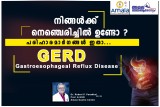Wait a minute…has someone ever told you that you were snoring all night? Do you feel tired even at the start of the day that your eyes feel so heavy ? Then let us take the next step forward to know what the sleeping bug is all about !
THE BUG!
Period of shallow breathing or breathing with pauses in between define sleep apnoea. Here , there is momentary cyclical cessations in the breathing rhythm which is called apnoea . This leads to reduction in the breathing amplitude decreasing the oxygen content in the blood (hypoxia) and increasing the carbon dioxide levels (hypercapnia) It can be classified into 3 types :
1.Obstructive sleep apnoea (OSA).
2.Central sleep apnoea.
3.Mixed type.
Of these, Obstructive sleep apnoea is the commonest. This fruitless contraction of the respiratory muscles while breathing results in the bluish discoloration of the body due to carbon dioxide retention and low levels of oxygen
As a result, people experience daytime sleepiness and neuro- cognitive disturbances. Subsequently, studies showed a strong evidence for the link between obesity as a risk factor for OSA.In most cases, these patients may not suffer from other lung diseases that cause sustained hypoxia.
BUGS' TRAVELOGUE
Both in normal and in a state of wakefulness the ventilator control systems of our body function efficiently. It is in sleep(NREM phase)that either the upper airway obstruction or default in neuro muscular coordination that symptoms arise. Depending on the severity of this disorder, the symptoms persist and leads to debilitating consequences. Unhealthy diet, inadequate sleep, chronic inactivity are some of the modifiable risk factors that play a crucial role in etiology of OSA and obesity (vice-versa).On a molecular level, these can cause sustained chronic inflammation ,oxidative damage and insulin resistance paving a way for Diabetes. People who have Diabetes Mellitus may also suffer from sleep apnea.OSA leads to hypoxia and hypercapnia that eventually leads to hypertension, cardiovascular diseases and stroke.As a result of compensation, persistent hypoxia and hypercapnia can lead to a condition known as pulmonary artery hypertension and pulmonary edema.Due to upper airway obstruction followed by an episode of apnoea,the negative intrathoracic pressure rises as a compensatory measure. This can lead to acid aspiration, bronchitis, pneumonia and GERD. Studies have shown that decreased oxygen levels in blood and sleep fragmentation can lead to loss of tissue in the brain .This eventually leads to memory loss and dementia.
THE ROAD MAP
Individuals with low muscle tone or increased amounts of soft tissue around the airway passage (or pharynx) develop OSA.People with congenital upper airway defects also develop OSA.
During an episode despite the body's effort to maintain the muscle tone ,the airway remains partially collapsed. Person breathes against a partially collapsed airway and leads to the person experiencing a pause in breathing or as we say shallow breathing. Air flows against this collapsed airway leading to what we commonly refer to as snoring. A sign that 'The Bug' might be in action! The individual wakes up all of us sudden. This restores the muscle tone and the person goes to sleep. As a result,there is sleep fragmentation.
HIGHLIGHTS OF THE 'BUGS JOURNEY'
Risk factors associated with OSA include alocoholism , smoking, sedative medications, unhealthy diet, physical inactivity and lack of sleep hygiene
Effects are as follows:
1. Sleep disruption: day time sleepiness, lack concentration, memory loss,poor attention span,irritability, mood swings,decreased productivity and poor organization.
Sleep fragmentation also disturbs the hormonal balance and may worsen insulin resistance, diabetes and fatty liver.
2.Persistant decreased oxygen in blood : high blood pressure that may precipitate as headache and visual disturbances.
3.OSA can trigger chronic inflammation and oxidative stress leading to inner wall injury of the blood vessel.With time patient might suffer from CAD ,MI and stroke .
MEN ARE BUGGED MORE !
Men in middle age and those who are obese are the prime target! Men with central obesity probably have deposits of fat around the belly and most importantly around the neck which leads to narrowing of the upper airway . Obesity is linked with decrease in lung volume and poor breathing abilities. There is loss of ability of the lung to recoil , as the amount of collagen needed to maintain elasticity is lost with age. Chronic smoking aggravates this further by reducing the efficiency of the upper airway muscles resulting in OSA.
CATCH THE BUG!
Well,if you identify yourself suffering from these symptoms; you might want to know more! Polysomnography aka sleep study is the way to the destination. An interesting fact is that OSA is also nicknamed 'The Pickwickian syndrome' , which is adopted from the famous novel by Charles Dickens - 'The Pickwick Papers!
To enlighten you more on this we have our very own Pulmonologists Dr.Paul Davis and Dr.Anjali .
Written by Dr Anjanet





